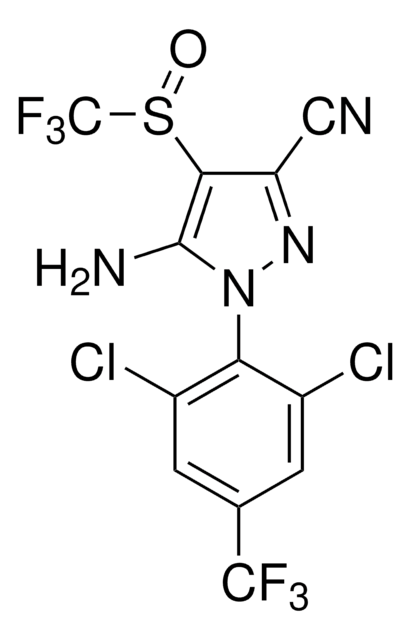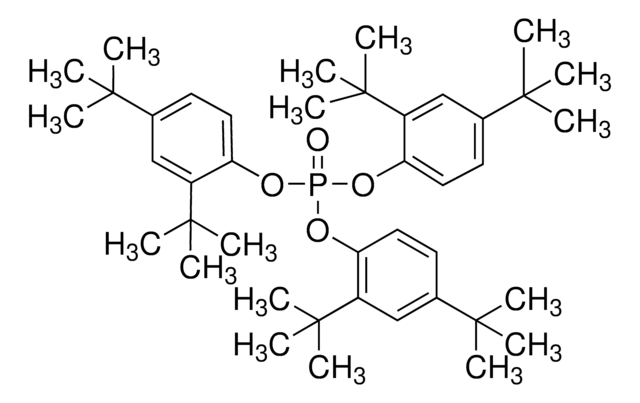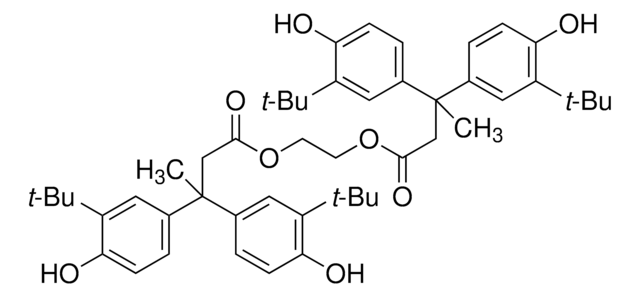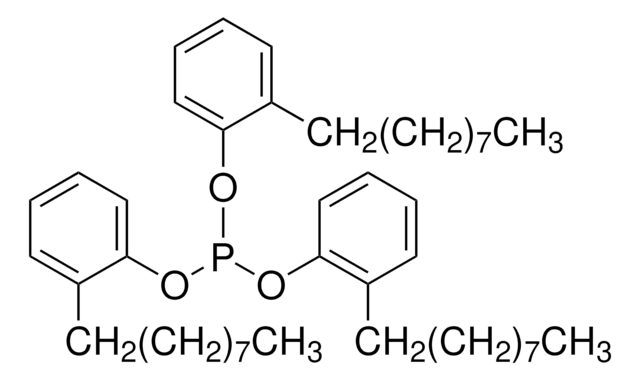P2155012
Plastic additive 12
European Pharmacopoeia (EP) Reference Standard
Synonim(y):
Tris(2,4-di-tert-butylphenyl) phosphite
About This Item
Polecane produkty
klasa czystości
pharmaceutical primary standard
producent / nazwa handlowa
EDQM
mp
181-184 °C (lit.)
Zastosowanie
pharmaceutical (small molecule)
format
neat
ciąg SMILES
CC(C)(C)c1ccc(OP(Oc2ccc(cc2C(C)(C)C)C(C)(C)C)Oc3ccc(cc3C(C)(C)C)C(C)(C)C)c(c1)C(C)(C)C
InChI
1S/C42H63O3P/c1-37(2,3)28-19-22-34(31(25-28)40(10,11)12)43-46(44-35-23-20-29(38(4,5)6)26-32(35)41(13,14)15)45-36-24-21-30(39(7,8)9)27-33(36)42(16,17)18/h19-27H,1-18H3
Klucz InChI
JKIJEFPNVSHHEI-UHFFFAOYSA-N
Szukasz podobnych produktów? Odwiedź Przewodnik dotyczący porównywania produktów
Opis ogólny
Zastosowanie
Opakowanie
Inne uwagi
Kod klasy składowania
13 - Non Combustible Solids
Klasa zagrożenia wodnego (WGK)
nwg
Temperatura zapłonu (°F)
Not applicable
Temperatura zapłonu (°C)
Not applicable
Choose from one of the most recent versions:
Certyfikaty analizy (CoA)
Sorry, we don't have COAs for this product available online at this time.
If you need assistance, please contact Obsługa Klienta
Masz już ten produkt?
Dokumenty związane z niedawno zakupionymi produktami zostały zamieszczone w Bibliotece dokumentów.
Klienci oglądali również te produkty
Nasz zespół naukowców ma doświadczenie we wszystkich obszarach badań, w tym w naukach przyrodniczych, materiałoznawstwie, syntezie chemicznej, chromatografii, analityce i wielu innych dziedzinach.
Skontaktuj się z zespołem ds. pomocy technicznej












